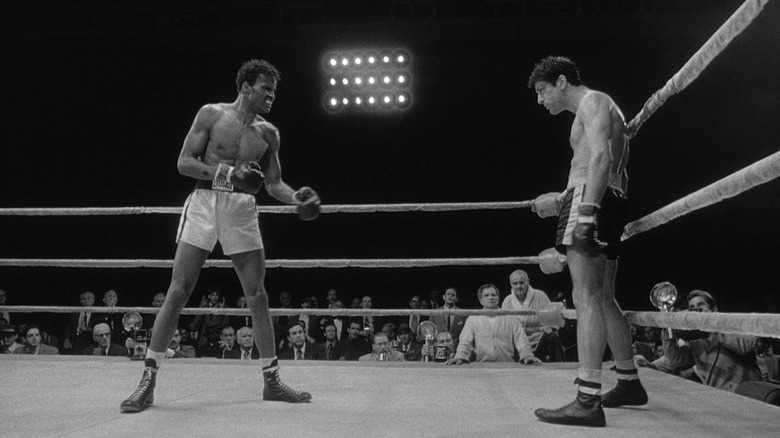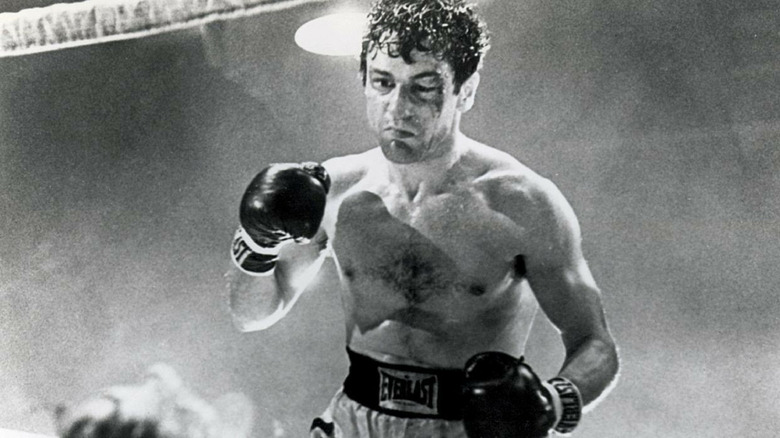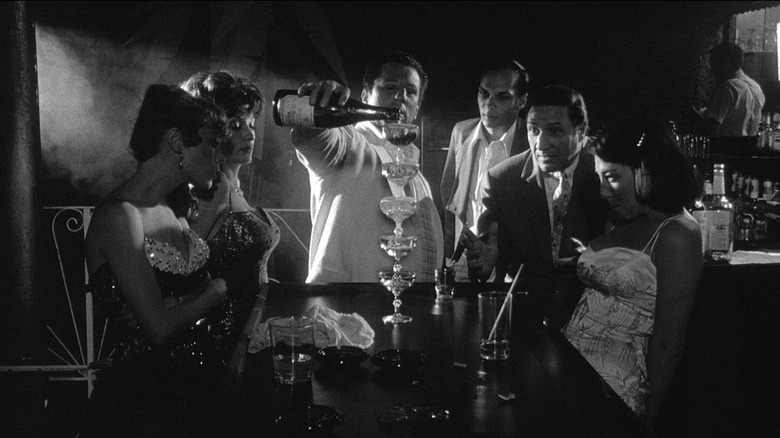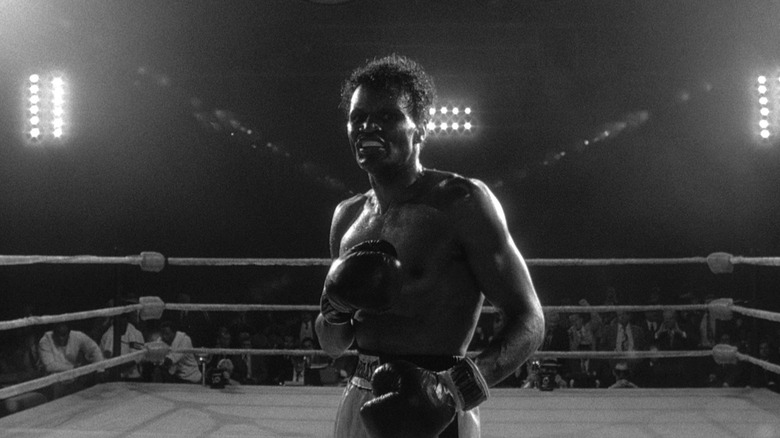How Raging Bull's Clever Filmmaking Techniques Made The Boxing Feel Real
The language of film is often meant to be invisible. Choices in design, composition, editing, and sound are all filled with techniques meant to affect audiences on a subconscious level. Low-angle shots are framed to convey power. Warm colors are used to implicitly express love or affection. The pace of the edit quickens during moments of excitement or fear, triggering our nervous systems. These are just a few of the many tools at a filmmaker's disposal.
Martin Scorsese is one of this generation's greatest filmmakers. His movies are satiated with daring film techniques that push the envelope of visual storytelling. He is known for long takes, dolly zooms (known as the "Jaws" effect where the background changes in size), freeze frames, and aggressive camera movement.
Scorsese's 1980 film "Raging Bull" is based on the true story of boxer Jake LaMotta's fall from grace, derived from his memoir "Raging Bull: My Story." The boxing sequences, in particular, had to feel real. In typical risk-taking fashion, the filmmaker used unconventional methods to bring the world of boxing to life and make audiences connect with the fights on a primitive level.
They spent $90,000 on flashbulbs
According to No Film School, Scorsese's longtime editor Thelma Schoonmaker revealed how the production team used sound to bring the boxing sequences to life for audiences. To create an otherworldly effect and animalistic energy of the fights, sound designer Frank Warner used elephant and horse sounds. He paired the animal sounds with a bass drum that was detuned, recorded, and finally run through various effects to add texture. Though inconspicuous as they might seem to the untrained ear, it's a clever subterfuge meant for our subconscious.
For added realism, Scorsese used the original radio play-by-play of the fights, calling 1950's boxing commentary "poetry." Even Jake LaMotta's actual cornerman is cast as the cornerman in the film and is heard talking in several scenes. Schoonmaker adds that the production spent around $90,000 on the flashbulbs incessantly used in the film, which Cinephilia Beyond notes is comprised of five-to-six sounds each to achieve the sound of an old 1940's flashbulb.
While the sound of "Raging Bull" helps make it a masterpiece, Scorsese's obsession with realism almost threatened the release of the film.
Scorsese threatened to take his name off the film
The film's black and white imagery is typically what comes to mind when thinking about "Raging Bull," but that wasn't the original plan. It was Scorsese's reminiscing about watching childhood boxing matches in black and white that led to the decision that shooting in black and white felt more "real." To heighten the verisimilitude, Scorsese hand-scratched the film negatives of the LaMotta home movie sequences with a coat hanger to age them.
Scorsese used set design as an opportunity for audiences to peer inside LaMotta's tortured psyche. They used multiple boxing rings of various sizes to reflect the varying psychological state of LaMotta. For some of the boxing shots, Scorsese used flames under the lens to add a shimmering effect, mimicking some kind of hell (a technique later used by Spike Lee in "Do the Right Thing"). A heavy haze hangs over the ring, an allegory for the prized fighter's inability to see past his own demons.
Despite the painstaking efforts to make the fights feel real, Scorsese also took a huge risk by eschewing the established model for shooting a fight sequence. In fact, the way Scorsese choreographed the fights didn't resemble a boxing fight at all. And it was all by design.
It doesn't look like a boxing movie
If the fight scenes don't look like other films, that's because they aren't supposed to. Scorsese emphasizes the violence with buckets of blood spurting farther than scientifically possible. Slow-motion sequences make the fighter's stances look ridiculous, almost cartoonish. The focus of a fight shifts from close-ups of the damage inflicted on LaMotta to sound dropping out with only his gasping breath heard. In what might be considered a reverse point-of-view shot, the camera twists and falls to the mat with LaMotta opponent Tony Janiro, all the while facing Janiro. In discussing the psychology of the fights, Scorsese told The Hollywood Reporter:
"And what if the interpretation of the fight is subjective; it's what the fighter sees or what he hears? How he perceives sound, image, physicality and everything you can think of."
In answering that question, Scorsese decided to never leave the ring when filming the fight scenes, leaving LaMotta's experience to become the viewer's sensibility. "Raging Bull" ostensibly turns the subject of boxing into the battle occurring inside one man's head. It is an exercise in using extrinsic techniques to tell a story on a psychological level.
Scorsese's obsession with detail almost cost him the entire film. After nearly a year of sound mixing, United Artists told the director they needed the prints for the film's opening the following week. Scorsese claimed he could not hear an extra's line ordering "a Cutty Sark and water" in the Copacabana scene. Scorsese finally relented, but not before threatening to take his name off the picture. And though the Copacabana sound was never adjusted, anyone claiming to dislike "Raging Bull" because of the Cutty Sark line deserves a LaMotta-sized punch to the breadbasket.



